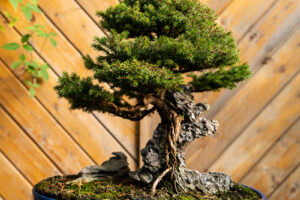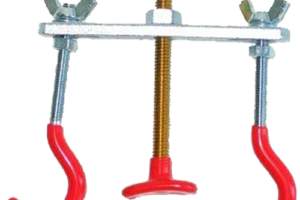Growing White Pine (Pinus Strobus) as Bonsai
White Pine bonsai is an excellent choice for those looking to grow an attractive and stately bonsai tree. This species is native to North America and is known for its distinctive, long needles and dense foliage. White Pine bonsai is relatively easy to care for, making it a great option for both beginner and experienced bonsai enthusiasts.
Care of White Pine Bonsai
Light: White Pine bonsai thrive in bright, indirect light. They do best in full sun or partial shade and can be sensitive to direct sun exposure. To avoid sunburn or other damage, it is recommended to slowly acclimate the tree to sunlight, starting with a few hours a day and gradually increasing the amount of sun exposure.
Watering: White Pine bonsai should be watered regularly, making sure not to let the soil dry out completely. They are tolerant of a wide range of watering conditions and can be watered using the “soak and dry” method, where the soil is thoroughly soaked and then allowed to dry out before the next watering. Overwatering should be avoided, as this can cause root rot.
Soil: White Pine bonsai prefers well-draining soil and does best in a mixture of peat moss, sand, and small-grain bark. Good soil drainage is critical for preventing root rot and other problems associated with excess moisture.
Fertilization: White Pine bonsai should be fertilized regularly to promote healthy growth. It is recommended to use a balanced fertilizer, such as a 10-10-10 blend, every two to four weeks during the growing season. During the winter, it is best to stop fertilizing and let the tree rest.
Pruning and Wiring: Pruning is important for maintaining the shape of the White Pine bonsai and for controlling its size. Pruning should be done regularly and should remove any unwanted growth or shoots. Wiring can be used to shape the branches and help guide their growth. When wiring, it is important to use caution and to wire the branches tightly enough to bend them, but not so tightly that they break.
Repotting: White Pine bonsai should be repotted every two to three years, or when the roots become root-bound. When repotting, it is important to use a soil mixture that is well-drained and to make sure the tree is planted at the same depth as it was before.
Pests and Diseases: White Pine bonsai is relatively resistant to pests and diseases, but it is still important to be aware of any problems that may arise. Common pests include scale insects, spider mites, and needle-cast fungi. To prevent pest and disease problems, it is important to keep the tree healthy and to inspect it regularly for any signs of trouble.
Conclusion
White Pine bonsai is a beautiful and stately tree that is relatively easy to care for. With the proper care, White Pine bonsai can thrive and grow into an impressive bonsai specimen. Whether you are a beginner or an experienced bonsai enthusiast, growing White Pine bonsai is a great choice for those looking to create a stunning and meaningful bonsai tree.






Leave a Reply
Your email is safe with us.
You must be logged in to post a comment.